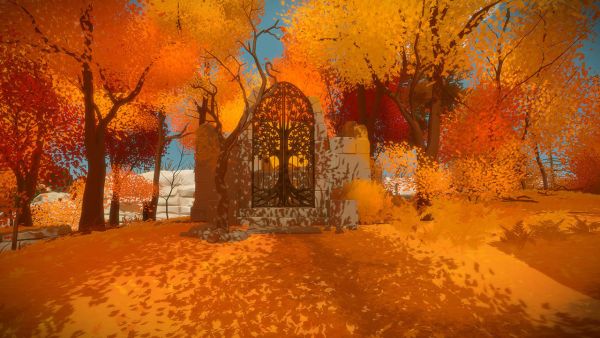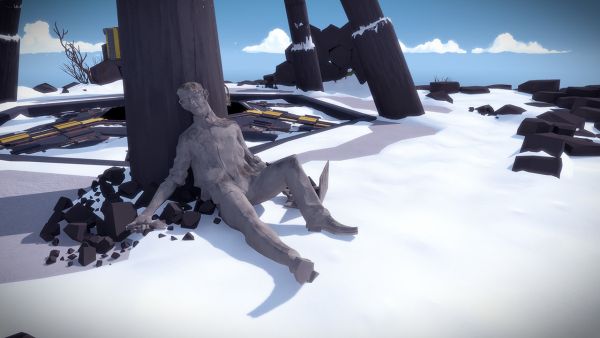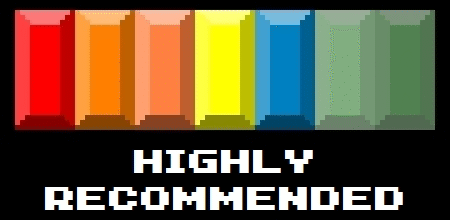
In The Witness, you traverse an island divided into traditional video game zones (desert, forest, castle) solving line puzzles. Each puzzle exists on a square grid with a starting point and an end point. Your goal is to successfully navigate these puzzles. The puzzles are very simple at the beginning of your quest, but quickly become more complicated after the introduction of new rules.
Contrary to what the above description might make you think, The Witness is a fascinating game, and if my description makes it sound dry or boring, it is only because I am eager to dispel any theories of what The Witness may or may not be.
Platforms: PC, PS4 (Version Played)
Publisher: Thekla
Developer: Thekla
Genre: First-Person Puzzle
Release Date: January 26, 2016
ESRB Rating: Everyone
Memories of the twisty story that slowly emerged from Jonathan Blow’s previous game, Braid, have led many to believe that The Witness contains its own hidden storyline, and that the line puzzles are something of a ruse. Throughout The Witness’s long development cycle, the public reaction to its demos have always been, “OK, but what do you really do in this game?” Let me state clearly that The Witness really is just line puzzles, and there isn’t so much a story in it as a meditation on, well, meditation. Neither of these points are intended as criticisms, for even if these puzzles don’t ever add up to a significant story, they do accumulate in such a way that you will end up going on your own journey, starting with being completely baffled by the island and ending with the feeling of mastery that comes from having explored and uncovered its every secret.
To explain how The Witness does this (and stick with me), I need to tell a story about Dark Souls.
It was just after I had been killed for the second time by the Taurus Demon (the first proper boss in Dark Souls) that I started to understand the appeal of From Software’s Souls games. The first time it killed me, I drew upon over a decade’s worth of training that told me I needed to go back, grind out experience on easier enemies, level up, and come back and kill that thing. After returning a few levels higher, I found that the Taurus Demon was able to kill me just as quickly as before. With each level I gained, my maximum health improved only slightly, my damage by mere increments. Beating the myriad bosses of Dark Souls wouldn’t require grinding; I’d just have to get better at the game.
This is the great innovation of the Souls games: in a traditional action RPG, the player character follows a linear progression, learning new and better abilities to defeat stronger enemies; in a Souls game, your character never gets that much more powerful. This change is simple but revolutionary, for every battle feels hard won, and with each victory comes the knowledge that the character didn’t get more powerful – you did.

With this in mind, The Witness very much feels like a response to the Souls games, or rather the application of From Software’s principal of making the player get better onto a different genre. For all of the Myst comparisons, The Witness, with its different zones designed to teach you a new puzzle rule, actually plays like a Metroidvania. The Witness has only one type of puzzle that requires you to draw a line from the start point on a grid to the end. Simple enough? Well no, as it turns out, for your ability to solve these puzzles is frustrated upon encountering strange symbols on the grid that must be understood before the solution can be reached, and the meaning of these symbols can only be ascertained by working your way through their corresponding location and paying attention to the rules that the puzzles establish. Like a Metroid-style game, you collect a set of tools that allow you to progress, but these tools aren’t literalised as a double-jump or bomb-bag, rather, they exist knowledge accumulated from playing the game. In The Witness, the character has nothing, only the ability to move and manipulate puzzles; if there is an inventory, it is simply the rules that you as the player learn, and if there is a mechanic, it is simply your ability to apply and use this learning. All those traditional tools, items, and upgrades that allow you to solve puzzles are in your head the entire time; you just have to find them.
The Witness is also full of great aesthetic design, exercising in all aspects an austerity that helps you to enter a meditative or contemplative state that is both the ideal way to play the game and, essentially, the game’s thesis statement. The island has no wind or tides. The only reliable ambient sound and movement comes from a waterfall and river that serve as a great spot to sit and think about particularly challenging puzzles, or even as a sort of palette freshener for when you cannot stop thinking about one puzzle. The island is mostly made from beautiful, but fairly basic, architecture that helps you to quickly realise that everything that can be seen is significant: that peak you can see in the distance, the layout of the trees in a grove, even the pattern of missing bricks in a wall, all of these things are significant and provide clues about how to solve the puzzles.

Many games are designed according to decades-old principles that are almost never questioned, but there is almost nothing in The Witness that seems unconsidered. I could spend hours detailing all the ways that this game successfully challenges the sacred cows of game design, but for the sake of time I’ll use movement as an example. Modern first-person game design often aims to empower the player by increasing movement options. Games like TitanFall and the recent Call of Duty games feature super-powered freerunning, and these seem to argue that the best design allows the player to get from point A to point B as fast as possible. When considered alongside these examples, the slow walking speed in The Witness seems almost perverse. Fairly recently, Everybody’s Gone to the Rapture faced significant criticism for its slow walking speed. But it doesn’t feel like an effort to force the player to appreciate the apparent beauty of the world in The Witness. Rather, the walking speed actually feels as though it aids the puzzle-solving process.
When playing The Witness, I often became stuck on a puzzle, gave up and walked across the map to find something else to bang my head against. However, the leisurely walk-speed and simple beauty of the island would often lead me to gently mull over the puzzle as I walked and, on more than one occasion, I realised the solution while walking and had to rush back across the island to complete the puzzle. I have also seen complaints that you cannot jump in The Witness, and that this slows down your travels or makes them less interesting. Again, I believe that being unable to jump and having to use the footpath to get up and down the mountain led to me unconsciously happening upon solutions in the downtime between puzzles. In The Witness, even the movement is perfectly honed to better aid puzzle solving and the contemplative mood of the game.
According to Jonathan Blow, the lead designer of The Witness, the game has over 700 puzzles, and the fact that most work so well make the few that don’t all the more disappointing. The Witness constantly delights by subverting your expectations of what the puzzles can do and what you as the player can do within them, but a few puzzles make actually inputting the solution tricky even once you have worked it out. I would naturally approach all of the puzzles by directly facing them, and was fascinated the first time I realised that the puzzle’s solution could only be found by literally looking at it from a different angle. While this trick once served to highlight an interesting assumption I had held about how to solve the puzzles, it quickly became tiresome in the late game when I found myself shifting the character by slight degrees to try and get the perfect angle to solve the puzzle. Most of the time the actual line puzzle is more accurately thought of as a way to show the game that you have solved the puzzle, but in a few instances the act of communicating this to the game becomes the greater challenge, and this quickly frustrates.
In an industry that puts a premium on having the most mechanics and the ability to demonstrate that your new game is not just better but bigger than that last entry in the genre, The Witness feels like a sea change because it strips all of the mechanics out and asks you to learn. A common blanket criticism aimed at games is that they are power fantasies designed to grant you control of a superhero. The Witness gives you nothing, relishing in not even granting you a reticle until it’s strictly needed, and yet in the game’s harder puzzles, when I felt as though I was drawing on everything I had learned to find the solution, I felt smarter and more powerful than most games ever make me feel.

Review Disclosure: A retail copy of The Witness was purchased by Warp Zoned for the purposes of this review.






